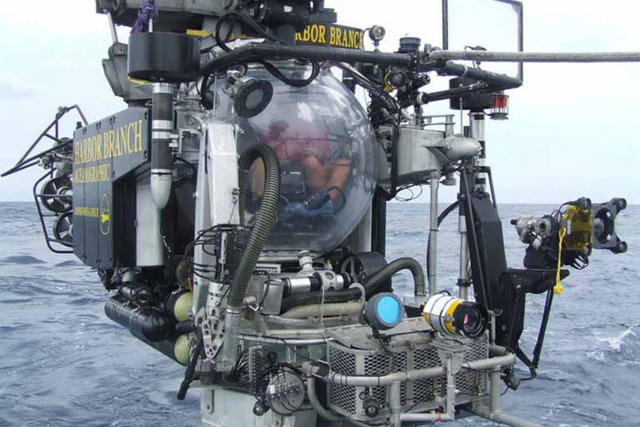In the spring of 2023, publications in the media of NATO and Europe have become more frequent, claiming that Moscow will strike at underwater infrastructure facilities in the event of a conflict with the alliance. In this regard, the plans of the West to wage war on the seabed are of interest. Earlier, in the first and second parts of the article, the relevant activities of the Navies of France, Great Britain, Italy and Germany were presented. This material is devoted to the plans of Sweden, Norway and the USA.
The war on the seabed by the Swedish Navy
According to Western experts, the control and protection of national waters from underwater operations conducted by the former Navy of the Soviet Union, and today the Russian Federation and other agencies, pushed the Swedish Armed Forces to develop a comprehensive surface, air and underwater response to this threat in addition to stationary surveillance installations. The Swedish Navy maintains both modern mine-fighting vessels and submarines, and today they are looking for unmanned (uninhabited) systems to quantitatively increase the fleet and acquire new capabilities.
It is believed that a qualitative leap in underwater operations will be provided by the next-generation A26 submarines with an air-independent engine (AIP), built by Saab Kockums. The boats are being developed for close interaction with autonomous uninhabited (AUV) and remotely operated vehicles (ROV), as well as for the transportation of other advanced vehicles. The Swedish Navy has been at the forefront of testing and integrating AUV and ROV with submarines to survey the seabed and water column along with reconnaissance operations in the crowded Baltic Sea theater.
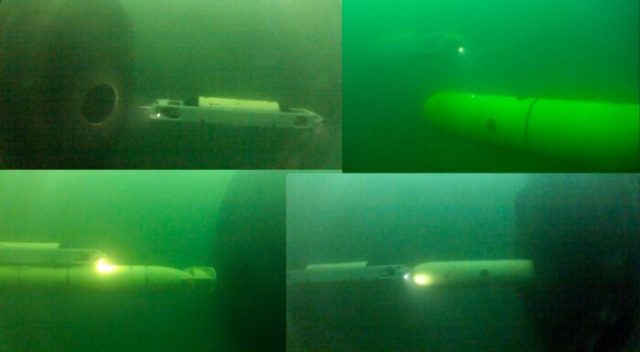
The Saab SUBROV underwater vehicle is launched from the TA layout In 2019, the Swedish Procurement Agency confirmed the availability of ROV Saab SUBROV for its submarines.
The SUBROV device is treated like a heavy torpedo, using the same loading and unloading equipment that allows launching the device and removing it from standard 533 mm torpedo tubes (TA) of NATO. With a length of 3.1 m and a weight (in air) of 500 kg, the SUBROV is equipped with a control system with six degrees of freedom and lithium-ion batteries that provide 6 hours of operation at a maximum working depth of 500 m. According to the Swedish Navy, the device can be used for various missions: surveillance, inspection/intervention, maritime mine action (MCM), as well as for the return of AUV via TA.
Currently, the Navy Command is considering a new generation of uninhabited vehicles that could be launched by current and future A26 submarines. Moreover, the latter are planned to be equipped with a large flexible payload lock (FPL) for special forces operations, as well as for launching and taking on board larger uninhabited vehicles, such as the Saab Double Eagle ROV / AUV and single-hull or double-hull Sabertooth ("Saber-Toothed").
The latter combines military and commercial Saab ROV/AUV technology developed by the Saab Seaeye division. "Sabretooth" is capable of diving to a depth of 3000 m, has a long range, extended functionality and six degrees of freedom. The device can be equipped to perform various missions and use docking nodes on the seabed to recharge batteries. The AUV can be sheltered, allowing them to operate for up to six months without maintenance, eliminating the cost of a surface vessel.
Saab is also selling eWROV, the latest addition to Saab's Seaeye underwater commercial portfolio. The ROV is fully electric, including its manipulators, and is capable of operating at depths up to 3000 m, with the possibility of increasing this depth to 5000 m.
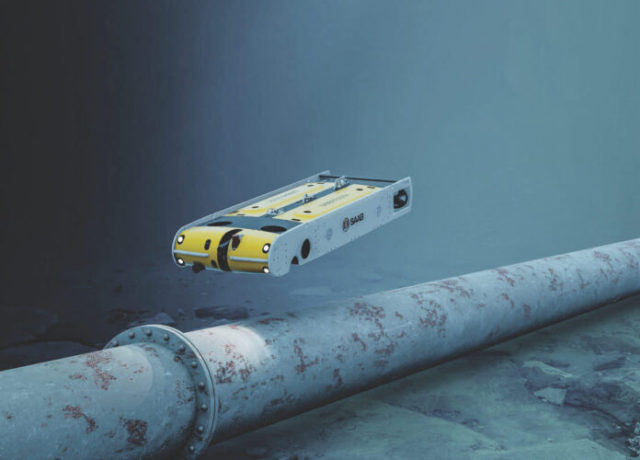
Double-hull AUV Sabertooth from SaabUnderwater plans of Norway
The Royal Navy and the Norwegian Ministry of Defense have contributed to the development of the Kongsberg Maritime HUGIN AUV in service, whose family of systems is currently either ordered or in service with 12 customers around the world, including the USA, France, Finland, Poland, Italy, Germany, India, Indonesia, Peru and Norway. Today HUGIN is used to perform a range of tasks, including search and rescue, Rapid Environmental Assessment (REA), MCM, military intelligence and warfare on the seabed.
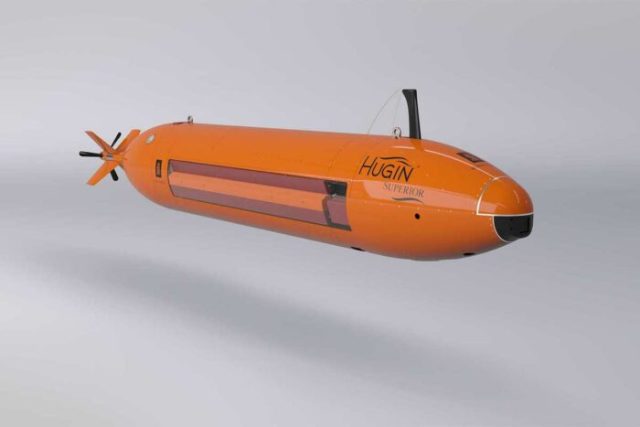
AUV Hugin Superior The HUGIN autonomous uninhabited vehicle is available in three main variants: basic (designed for depths of 3000 m, 4500 m and 6000 m), HUGIN Superior and HUGIN Endurance.
The latter recently had an undisclosed naval customer, whose delivery will take place later in 2023. HUGIN Endurance is the largest member of the family with a diameter of 1.2 m and a length of 10 m, and it is transported in a 12 m (40 ft) long shipping container. The device has a continuous operation duration of up to 15 days and is designed for a depth of up to 6000 m. It is equipped with a number of sensors focused on mission capability and situational awareness.
US Events
The threat created earlier by Soviet and now Russian submarines in the North Atlantic through the Greenland-Iceland-United Kingdom Strait (GIUK) to the East Coast of the United States, the Mediterranean Sea and the Pacific Theater of Operations during the Cold War prompted the development of the SOSUS (SOund SUrveillance System) underwater fixed acoustic surveillance network. Today, the remaining facilities, together with mobile and deployable facilities, are included in the Integrated Underwater Surveillance Systems (IUSS) and the Underwater Surveillance Command project, and the programs are managed by the Maritime Surveillance Systems Program Office (MSS, or PEO UWS PMS 485). They provide flexible and operational surveillance of vast areas around the world for the commanders of anti-submarine forces in the theater.
In addition to the permanently upgraded fixed Surveillance System (Fixed Surveillance System, FSS) and the complex of towed massive surveillance sensors (Surveillance Towed Array Sensor System, SURTASS) / Compact Low Frequency Active (Compact Low Frequency Active, CLFA) installed on current and future ships of Tactical auxiliary general ocean surveillance (Tactical-Auxiliary General Ocean Surveillance, T-AGOS) deployed in the Pacific theater, the project of Deployable Surveillance Systems (DSS) is becoming key to counter the expanding operations of Russian (and Chinese) submarines in areas not covered by stationary complexes.
DSS includes the following systems: Deep-water passive (Deep Water Passive, DWP), deep-water active (Deep Water Active, DWA) and mobile passive-active systems (Mobile Passive Active System, MPAS). Spiral developments in response to the growing underwater threat will use the ongoing efforts of the Navy, the Defense Advanced Research Projects Agency (DARPA) and small businesses, including data processing and sensor technology.
Among DWP systems, the US Navy continues to acquire and improve a Transformational Reliable Acoustic Path System (TRAPS). The system was conceived (and now separately provided) by Leidos as part of DARPA's Distributed Agile Submarine Hunting (DASH) initiative. TRAPS is a deployable stationary passive sonar unit designed to provide coverage of a large area by taking advantage of working from the deep seabed. To meet similar requirements, the U.S. Navy has also developed and is testing the SURTASS-E, which offers the same passive capabilities packaged in containers for deployment from available vessels.
In order to raise awareness of the underwater situation under the icy surface of the sea, in the fall of 2022, the Office of Naval Research of the US Navy separately conducted tests of the Arctic Mobile Observing System (AMOS). AMOS is a prototype of a mobile sensing system that includes uninhabited underwater vehicles capable of operating in the Arctic. With the use of a central ice buoy, the devices are deployed anywhere in the Arctic in the interests of providing critical infrastructure (power supply, communications, navigation and environmental exploration).
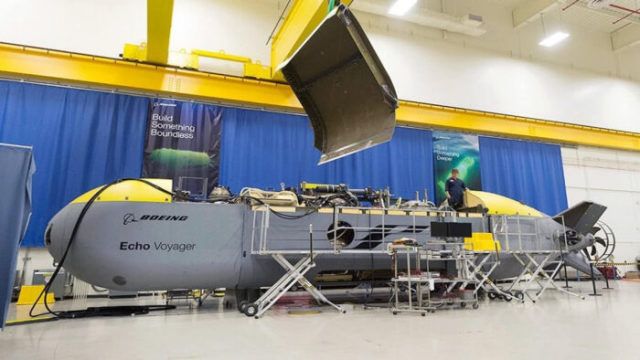
Super large uninhabited underwater vehicle ORCA The U.S. Navy is also working to contribute to the overall picture of underwater awareness by integrating underwater unmanned vehicles (UUVs) with fixed and mobile network infrastructure and with submarines.
As for autonomous operations in support of developments in the field of anti-submarine defense, the candidate is an 80-ton XLUUV Orca ("Killer Whale") with a modular payload compartment, currently being developed by Boeing. However, the program is three years behind and is more expensive than originally planned.
Autonomous uninhabited vehicle Remus 600 In smaller UUV segments, the current Razorback coastal warfare sensors are autonomous uninhabited vehicles (LBS–AUV) based on the medium-sized UUV HII Remus 600, capable of continuous autonomous ocean sensing and data collection in support of the preparation of the operational situation by Naval Intelligence (IPOE), currently operated using a shelter in the dry dock of the submarine (DDS), but soon they will be launched and extracted by TA with special equipment.
Meanwhile, the US Navy has signed a contract with Leidos to develop a more powerful medium-sized drone (MUUV), which is planned to be used through TA in mine-fighting expeditionary operations as the current LBS-AUV /exMCM.
According to the materials of the resource euro-sd.com
